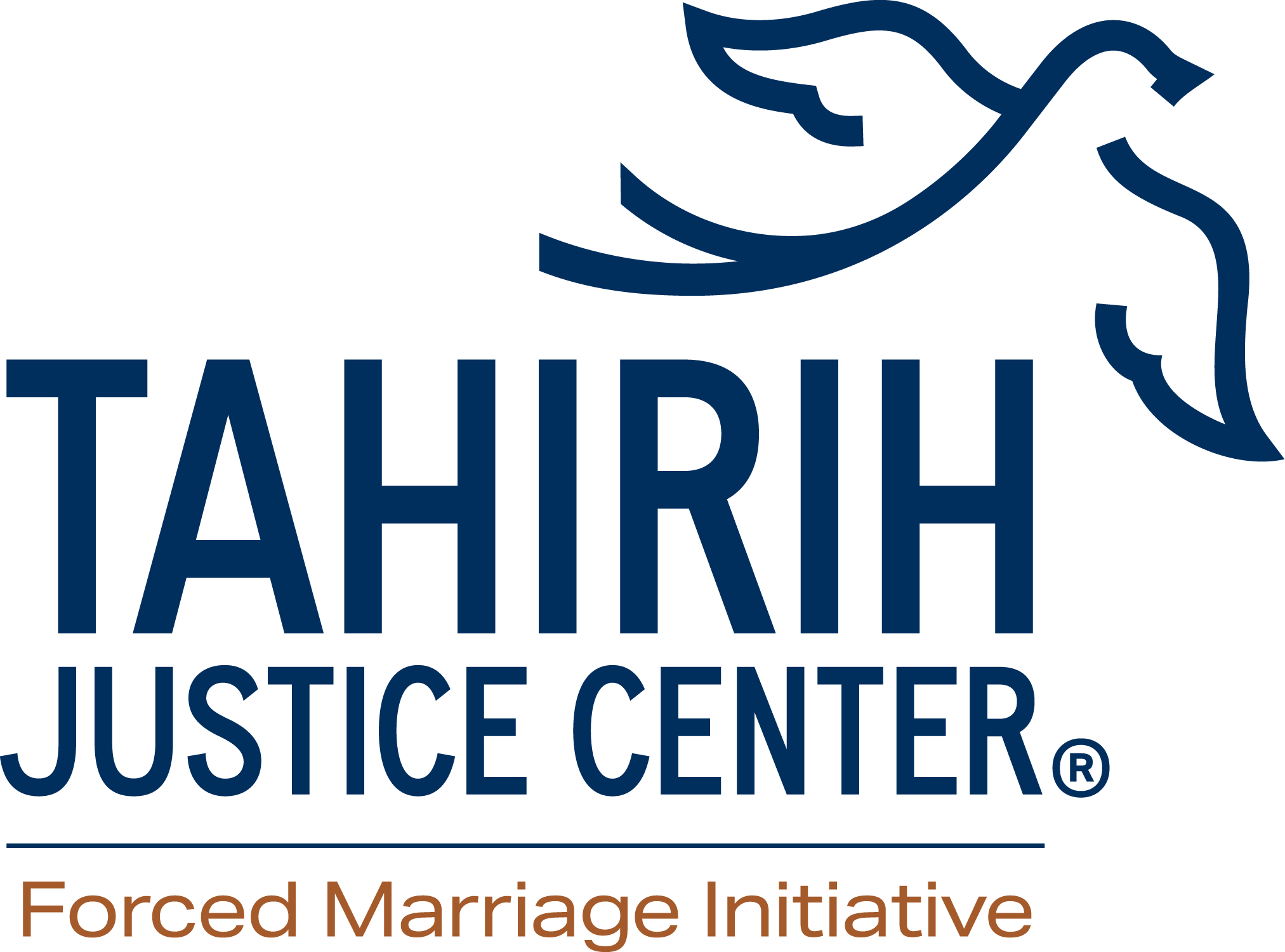Resources
This is a searchable library of publications, webinars, blog posts, and training manuals from the U.S. and around the world on the topic of forced marriage.
Webinar – Who’s Speaking Up, or Falling Silent? Reflections From Advocates and Helplines on the Impact of Forced Marriage Criminalization in the U.K.
During this webinar, a panel including both U.K. government and NGO service providers and advocates shared their reflections on the impact that criminalizing forced marriage has had since 2014. Topics discussed included how criminalization has impacted survivor safety and decision making, community awareness and attitudes, and professionals’ knowledge of and responsiveness to forced marriage cases.
Presenters included:
Marai Larasi, the Executive Director of Imkaan, a U.K.-based organization dedicated to addressing violence against Black, Asian, minority ethnic, and refugee women and girls. She has worked in the ending violence against women and girls (VAWG) field for over two decades and has developed and led cutting edge services and programs which address violence against marginalized women and girls.
Priya Chopra, the Chief Executive of Saheli, a Manchester, U.K.-based organization working to assist and protect immigrant victims of violence. Saheli worked with the U.K. government to develop multi-agency guidelines for frontline professionals on how to respond to forced marriage cases. Saheli also collaborates with community partners to document and report on incidences of gender-based violence and survivors’ willingness and ability to access services and help from the authorities.
Chaz Akoshile, the joint head of the U.K. Forced Marriage Unit (FMU), a joint Foreign & Commonwealth Office and Home Office Unit. The FMU operates a public helpline, providing confidential advice and support to victims and professionals with responsibility for safeguarding children and protecting adults from the abuses associated with forced marriage. Chaz worked extensively to ensure that the forced marriage legislative proposals in England and Wales successfully completed their parliamentary passage – the new offenses were introduced in June 2014.
The Intersectionality of Forced Marriage and Other Forms of Abuse in the United States
Author: Casey Swegman, Forced Marriage Initiative – Tahirih Justice Center
Publication: 2016
This paper provides information and research on forced marriage in the United States and its intersections with child abuse, sexual assault and rape, domestic and family violence, stalking, female genital mutilation/cutting (FGM/C), and human trafficking. The research demonstrates that forced marriage is a serious but neglected problem in this country, and despite many advocates’ best efforts, survivors of forced marriage and those at risk continue to fall through the cracks of the systems and programs set up to protect individuals from abuse.
Examining the Impact of Gender on Young People’s views of Forced Marriage in Britain
Author: Aisha K. Gill, PhD; Heather Harvey
Publication: 2016
A study by the University of Roehampton and The Nia Project has found that there is a learned gender-based discrimination between British Asian youths. The findings suggest that girls are more likely to be compliant to forced marriage, while boys are more inclined to fight against such parental or familial wishes. The study’s recommendations are that forced marriage initiatives bare in mind this gendered difference when approaching the subject.
Legal Responses to Forced Marriage in the UK: Reflections from Justice System Professionals
During this live webinar, a panel of expert legal professionals from the United Kingdom provide background on the UK process which led to the creation of a civil forced marriage protection order (FMPO) in 2008, and the creation of a separate criminal offense of forced marriage as well as the criminalization of breaches of the FMPO in 2014. The panelists offer candid reflections on the current state of the law and the impact of the FMPO (over 850 issued to date) and criminalization (46 prosecutions reported since 2014; one conviction to date) on survivors’ willingness to come forward to seek help and their ability to access the resources they need.
Presenters Included:
Anne-Marie Hutchinson OBE, QC (Hon) is a partner at the Dawson Cornwell firm in London and a renowned family law attorney with expertise in forced marriages, children’s law, international family law, international custody disputes, and child abduction.
Nazir Afzal OBE was the Director of the United Kingdom’s Crown Prosecution Service from 2011-2015 and currently serves as Chief Executive of the Association of Police and Crime Commissioners.
Rashid Begum is a survivor of “honour” based violence and attempted forced marriage who has dedicated both her professional and private life to ensuring that others at risk are protected. A former police officer and a qualified lawyer, Rashid now serves as a solicitor for the police in the UK.
This webinar was presented on July 15th, 2016 as part of the National Network to Prevent Forced Marriage Quarterly Webinar Series.
Child Brides, Forced Marriage, and Partner Violence in America: Tip of an Iceberg Revealed
Author: Judith McFarlane, DrPH, RN; Angeles Nava, PhD; Heidi Gilroy, PhD; and John Maddoux, PhD
Publication: 2016
Researchers from Texas Women’s University conducted a 7-year study on 244 mothers who had reported intimate partner violence in the U.S. They based their survey questions on the 2011 Forced Marriage Initiative study, and found that 17% of respondents faced a forced marriage attempt, and among those respondents, 45% experienced the threat as a minor.


